HSBC 2006 Annual Report Download - page 126
Download and view the complete annual report
Please find page 126 of the 2006 HSBC annual report below. You can navigate through the pages in the report by either clicking on the pages listed below, or by using the keyword search tool below to find specific information within the annual report.-
 1
1 -
 2
2 -
 3
3 -
 4
4 -
 5
5 -
 6
6 -
 7
7 -
 8
8 -
 9
9 -
 10
10 -
 11
11 -
 12
12 -
 13
13 -
 14
14 -
 15
15 -
 16
16 -
 17
17 -
 18
18 -
 19
19 -
 20
20 -
 21
21 -
 22
22 -
 23
23 -
 24
24 -
 25
25 -
 26
26 -
 27
27 -
 28
28 -
 29
29 -
 30
30 -
 31
31 -
 32
32 -
 33
33 -
 34
34 -
 35
35 -
 36
36 -
 37
37 -
 38
38 -
 39
39 -
 40
40 -
 41
41 -
 42
42 -
 43
43 -
 44
44 -
 45
45 -
 46
46 -
 47
47 -
 48
48 -
 49
49 -
 50
50 -
 51
51 -
 52
52 -
 53
53 -
 54
54 -
 55
55 -
 56
56 -
 57
57 -
 58
58 -
 59
59 -
 60
60 -
 61
61 -
 62
62 -
 63
63 -
 64
64 -
 65
65 -
 66
66 -
 67
67 -
 68
68 -
 69
69 -
 70
70 -
 71
71 -
 72
72 -
 73
73 -
 74
74 -
 75
75 -
 76
76 -
 77
77 -
 78
78 -
 79
79 -
 80
80 -
 81
81 -
 82
82 -
 83
83 -
 84
84 -
 85
85 -
 86
86 -
 87
87 -
 88
88 -
 89
89 -
 90
90 -
 91
91 -
 92
92 -
 93
93 -
 94
94 -
 95
95 -
 96
96 -
 97
97 -
 98
98 -
 99
99 -
 100
100 -
 101
101 -
 102
102 -
 103
103 -
 104
104 -
 105
105 -
 106
106 -
 107
107 -
 108
108 -
 109
109 -
 110
110 -
 111
111 -
 112
112 -
 113
113 -
 114
114 -
 115
115 -
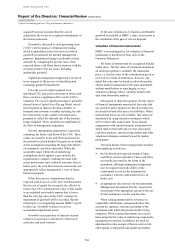 116
116 -
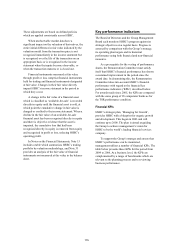 117
117 -
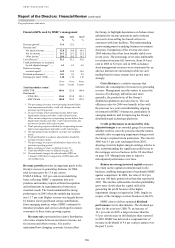 118
118 -
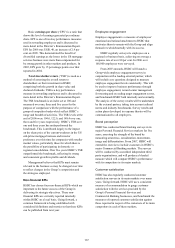 119
119 -
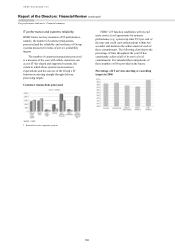 120
120 -
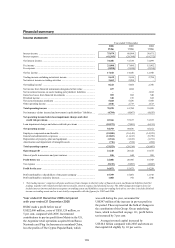 121
121 -
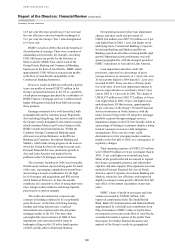 122
122 -
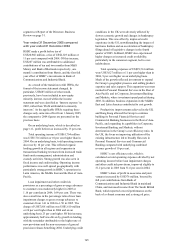 123
123 -
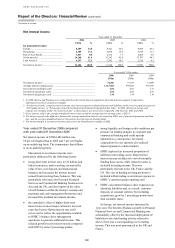 124
124 -
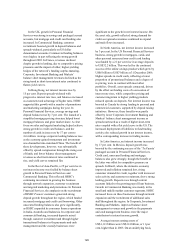 125
125 -
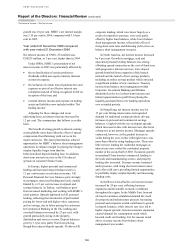 126
126 -
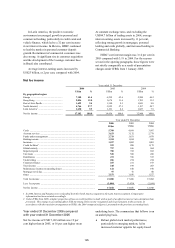 127
127 -
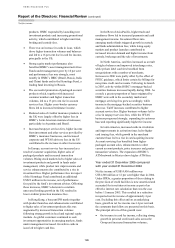 128
128 -
 129
129 -
 130
130 -
 131
131 -
 132
132 -
 133
133 -
 134
134 -
 135
135 -
 136
136 -
 137
137 -
 138
138 -
 139
139 -
 140
140 -
 141
141 -
 142
142 -
 143
143 -
 144
144 -
 145
145 -
 146
146 -
 147
147 -
 148
148 -
 149
149 -
 150
150 -
 151
151 -
 152
152 -
 153
153 -
 154
154 -
 155
155 -
 156
156 -
 157
157 -
 158
158 -
 159
159 -
 160
160 -
 161
161 -
 162
162 -
 163
163 -
 164
164 -
 165
165 -
 166
166 -
 167
167 -
 168
168 -
 169
169 -
 170
170 -
 171
171 -
 172
172 -
 173
173 -
 174
174 -
 175
175 -
 176
176 -
 177
177 -
 178
178 -
 179
179 -
 180
180 -
 181
181 -
 182
182 -
 183
183 -
 184
184 -
 185
185 -
 186
186 -
 187
187 -
 188
188 -
 189
189 -
 190
190 -
 191
191 -
 192
192 -
 193
193 -
 194
194 -
 195
195 -
 196
196 -
 197
197 -
 198
198 -
 199
199 -
 200
200 -
 201
201 -
 202
202 -
 203
203 -
 204
204 -
 205
205 -
 206
206 -
 207
207 -
 208
208 -
 209
209 -
 210
210 -
 211
211 -
 212
212 -
 213
213 -
 214
214 -
 215
215 -
 216
216 -
 217
217 -
 218
218 -
 219
219 -
 220
220 -
 221
221 -
 222
222 -
 223
223 -
 224
224 -
 225
225 -
 226
226 -
 227
227 -
 228
228 -
 229
229 -
 230
230 -
 231
231 -
 232
232 -
 233
233 -
 234
234 -
 235
235 -
 236
236 -
 237
237 -
 238
238 -
 239
239 -
 240
240 -
 241
241 -
 242
242 -
 243
243 -
 244
244 -
 245
245 -
 246
246 -
 247
247 -
 248
248 -
 249
249 -
 250
250 -
 251
251 -
 252
252 -
 253
253 -
 254
254 -
 255
255 -
 256
256 -
 257
257 -
 258
258 -
 259
259 -
 260
260 -
 261
261 -
 262
262 -
 263
263 -
 264
264 -
 265
265 -
 266
266 -
 267
267 -
 268
268 -
 269
269 -
 270
270 -
 271
271 -
 272
272 -
 273
273 -
 274
274 -
 275
275 -
 276
276 -
 277
277 -
 278
278 -
 279
279 -
 280
280 -
 281
281 -
 282
282 -
 283
283 -
 284
284 -
 285
285 -
 286
286 -
 287
287 -
 288
288 -
 289
289 -
 290
290 -
 291
291 -
 292
292 -
 293
293 -
 294
294 -
 295
295 -
 296
296 -
 297
297 -
 298
298 -
 299
299 -
 300
300 -
 301
301 -
 302
302 -
 303
303 -
 304
304 -
 305
305 -
 306
306 -
 307
307 -
 308
308 -
 309
309 -
 310
310 -
 311
311 -
 312
312 -
 313
313 -
 314
314 -
 315
315 -
 316
316 -
 317
317 -
 318
318 -
 319
319 -
 320
320 -
 321
321 -
 322
322 -
 323
323 -
 324
324 -
 325
325 -
 326
326 -
 327
327 -
 328
328 -
 329
329 -
 330
330 -
 331
331 -
 332
332 -
 333
333 -
 334
334 -
 335
335 -
 336
336 -
 337
337 -
 338
338 -
 339
339 -
 340
340 -
 341
341 -
 342
342 -
 343
343 -
 344
344 -
 345
345 -
 346
346 -
 347
347 -
 348
348 -
 349
349 -
 350
350 -
 351
351 -
 352
352 -
 353
353 -
 354
354 -
 355
355 -
 356
356 -
 357
357 -
 358
358 -
 359
359 -
 360
360 -
 361
361 -
 362
362 -
 363
363 -
 364
364 -
 365
365 -
 366
366 -
 367
367 -
 368
368 -
 369
369 -
 370
370 -
 371
371 -
 372
372 -
 373
373 -
 374
374 -
 375
375 -
 376
376 -
 377
377 -
 378
378 -
 379
379 -
 380
380 -
 381
381 -
 382
382 -
 383
383 -
 384
384 -
 385
385 -
 386
386 -
 387
387 -
 388
388 -
 389
389 -
 390
390 -
 391
391 -
 392
392 -
 393
393 -
 394
394 -
 395
395 -
 396
396 -
 397
397 -
 398
398 -
 399
399 -
 400
400 -
 401
401 -
 402
402 -
 403
403 -
 404
404 -
 405
405 -
 406
406 -
 407
407 -
 408
408 -
 409
409 -
 410
410 -
 411
411 -
 412
412 -
 413
413 -
 414
414 -
 415
415 -
 416
416 -
 417
417 -
 418
418 -
 419
419 -
 420
420 -
 421
421 -
 422
422 -
 423
423 -
 424
424 -
 425
425 -
 426
426 -
 427
427 -
 428
428 -
 429
429 -
 430
430 -
 431
431 -
 432
432 -
 433
433 -
 434
434 -
 435
435 -
 436
436 -
 437
437 -
 438
438 -
 439
439 -
 440
440 -
 441
441 -
 442
442 -
 443
443 -
 444
444 -
 445
445 -
 446
446 -
 447
447 -
 448
448 -
 449
449 -
 450
450 -
 451
451 -
 452
452 -
 453
453 -
 454
454 -
 455
455 -
 456
456 -
 457
457 -
 458
458
 |
 |

HSBC HOLDINGS PLC
Report of the Directors: Financial Review (continued)
Net interest income / Net fee income
124
growth was 10 per cent. HSBC’s net interest margin
was 3.10 per cent in 2006, compared with 3.14 per
cent in 2005.
Year ended 31 December 2005 compared
with year ended 31 December 2004
Net interest income of US$31,334 million was
US$235 million, or 1 per cent, higher than in 2004.
Under IFRSs, HSBC’s presentation of net
interest income in 2005 was particularly affected by:
• the reclassification of certain preference
dividends within non-equity minority interests
as interest expense;
• the inclusion of certain loan origination fees and
expenses as part of an effective interest rate
calculation instead of being recognised in full on
inception of the loan; and
• external interest income and expense on trading
assets and liabilities now included within ‘Net
trading income’.
Adjusting for these changes and on an
underlying basis, net interest income increased by
12 per cent. The commentary that follows is on this
basis.
The benefit of strong growth in interest-earning
assets globally more than offset the effect of spread
compression from flattening yield curves in the
major currencies. This latter phenomenon reduced
opportunities for HSBC’s balance sheet management
operations to enhance margin by placing the Group’s
surplus liquidity longer term than the
behaviouralised deposit funding base. In addition,
short-term interest rate rises in the US reduced
spreads on consumer finance loans.
In Europe, higher personal and commercial
lending and increased deposit balances led to a
12 per cent increase in net interest income. UK
Personal Financial Services balances grew strongly
in mortgages, unsecured lending and cards, mainly
funded by a 12 per cent increase in deposit and
savings balances. In Turkey, card balances grew
from increased marketing and working with HSBC’s
retail partners. Spreads tightened on UK personal
lending, reflecting the introduction of preferential
pricing for lower-risk and higher-value customers,
and on savings, due to better pricing for customers.
In Commercial Banking in the UK, lending and
overdraft balances increased by 23 per cent, with
growth particularly strong in the property,
distribution and services sectors. Deposit balances
grew by 11 per cent, partly from keen pricing,
though this reduced deposit spreads. Yields on UK
corporate lending, which were lower largely as a
result of competitive pressure, were only partly
offset by higher loan balances, while lower balance
sheet management income reflected the effect of
rising short-term rates and flattening yield curves on
balance sheet management revenues.
In North America, net interest income increased
by 4 per cent. Growth in mortgage, card and
unsecured personal lending balances was strong,
offsetting spread contraction as the cost of funds rose
with progressive interest rate rises. Core deposit
growth benefited from expansion of the branch
network and the launch of new savings products,
including an online savings product which attracted
a significant number of new customers. Treasury
income from balance sheet management within
Corporate, Investment Banking and Markets
diminished as the rise in short-term interest rates
limited opportunities to profit from placing the
liquidity generated from core banking operations
over extended periods.
In Hong Kong, net interest income rose by
17 per cent. Rising interest rates reinvigorated
demand for traditional savings products, driving
increases in personal and commercial savings
balances. Coupled with the rise in deposit spreads,
which increased in line with interest rates, this led to
a sharp rise in net interest income. Mortgage spreads
contracted, however, as the gradual increase in
yields during the year, in line with higher rates, was
more than offset by rising funding costs. There was
little net new lending for residential mortgages as
interest rate rises cooled the residential property
market in the second half of 2005. Economic growth
in mainland China boosted commercial lending to
the trade and manufacturing sectors, and property
lending also increased. Treasury income remained
under pressure, with rising short-term interest rates
and a flat yield curve providing limited opportunities
to profitably deploy surplus liquidity and increasing
funding costs.
In the Rest of Asia-Pacific, net interest income
increased by 24 per cent, reflecting business
expansion and favourable economic conditions
throughout the region. In the Middle East, buoyant
oil-based economies stimulated demand for credit
for property and infrastructure projects. Increasing
personal and corporate wealth contributed to growth
in deposit balances, while interest rate rises led to
higher deposit spreads. General economic expansion
created demand for consumption credit which
boosted credit card lending. For the reasons noted
above, treasury income from balance sheet
management was weaker.
